If you own an Apple computer, you've probably come across the term FileVault. And if not, I dare to continue to convince you that it is. You get the option to set up FileVault immediately after turning on your Mac or MacBook for the first time.
So that we don't get into trouble, let's talk about what FileVault actually is. This is a feature of the macOS operating system that allows you to encrypt your startup disk. If, God forbid, you lose your MacBook while traveling or anywhere else, you will lose the device as such, but no one will have access to your data through encryption.
It could be interest you
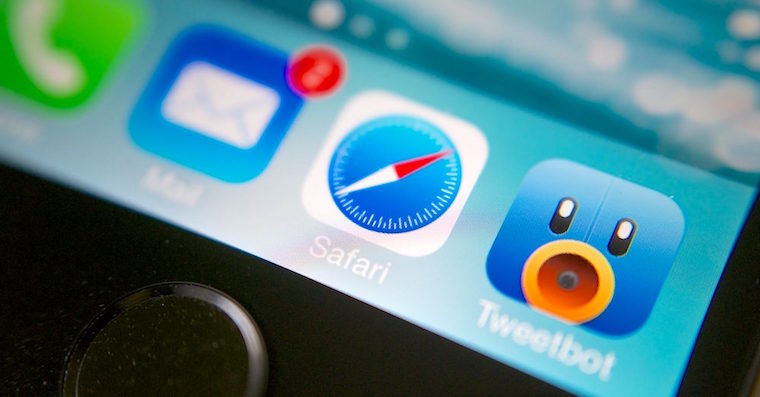
You might think that FileVault is kind of useless to you because you only have photos and a few documents on your Mac that you simply don't need. It's true that if you have less important and sensitive data on your Mac, you don't need to use FileVault, but even so, it would definitely not be nice if someone had access to your photos or anything else. I definitely recommend the use of FileVault to practically all macOS users. Only those users who own a really old Mac or MacBook, which does not have sufficient performance, should take it in a smaller arc. Because FileVault takes care of data encryption in the background, and thus cuts off part of the computer's performance. However, you won't notice any difference on newer Macs and MacBooks. So, if you have decided with these lines that FileVault is made for you, then read on. We'll show you how to activate FileVault, as well as how to manage it further.
How to turn on and manage FileVault
It can be said that there are two "types" of FileVault. One of them is safer from my point of view, the other one is less safe. During activation, you can choose whether you want to protect your drive either in such a way that you will be able to unlock it using an iCloud account, or in such a way that a so-called recovery key is generated for you and you simply cannot restore your data from iCloud. In my opinion, the second option is more secure, as you need an additional key to break the encryption. Thus, a potential thief has to find out a special key, and only the password to iCloud will not be enough for him. However, which form of security you choose is entirely up to you.
It could be interest you

If you have decided to activate FileVault, proceed as follows. On your macOS device, click in the upper left corner apple logo icon. Once you do so, a drop-down menu will appear, click on the option System Preferences… Then a new window will appear, in which click on the section Security and privacy. Then switch options in the top menu FileVault. Setting up FileVault now requires you to use the lock authorized in the lower left corner. Read more before activating FileVault warning, which reads as follows:
You will need a login password or recovery key to access your data. A recovery key will be generated automatically during this setup process. If you forget both the password and the recovery key, your data will be irretrievably lost.
If you are familiar with everything, just click the button Turn on FileVault… Then you just have to choose from two options, which I talked about at the beginning of this subsection. So you can choose either option Allow my iCloud account to unlock the drive, or Create a recovery key and not use my iCloud account. How you decide in this case is of course up to you. Then press the button Continue and it is done. If you choose the second option, you will be shown a code that you must write down somewhere in case you want FileVault turn off. In both cases, you need to connect your MacBook to the encryption to start charger, in the case of Mac, of course, it doesn't matter.
Turn off FileVault
If for some reason you decided to turn off FileVault, whether due to reduced performance or unusability, you can of course do so. Just go again after clicking on apple logo icon do System preference, where you click the section Security and privacy. Then move to the section in the top menu FileVault and click the button Turn off FileVault…
Personally, I haven't used FileVault on my MacBook for a long time, mainly because I didn't pay attention to it after I first started it. However, later when I was going through my system preferences, I noticed that I had FileVault disabled and immediately decided to enable it. How are you doing with FileVault on your Mac? Are you using it or not? Let us know in the comments.
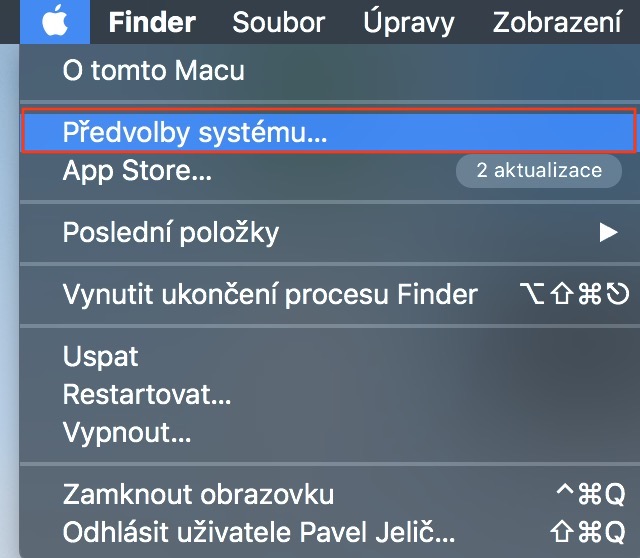

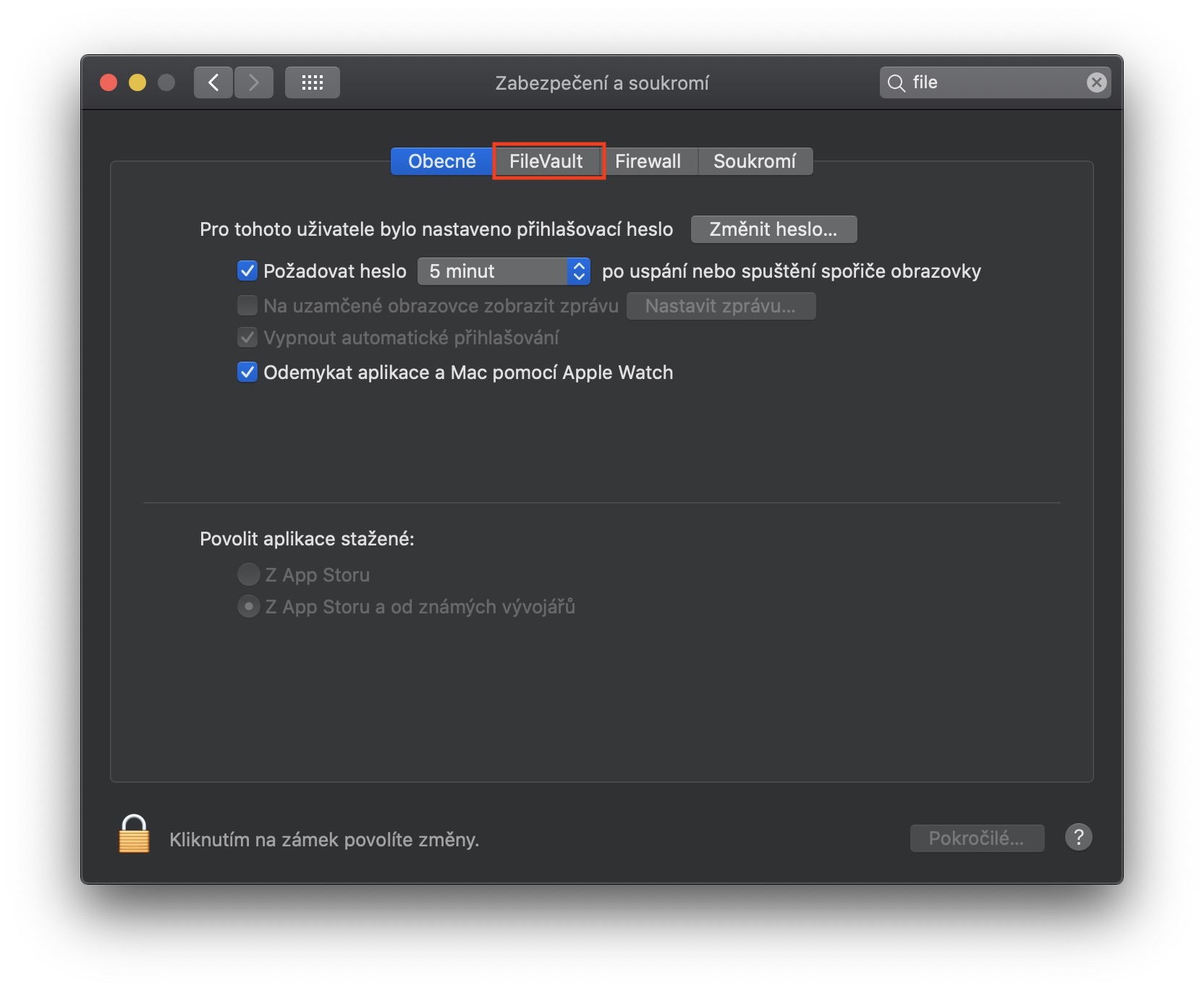
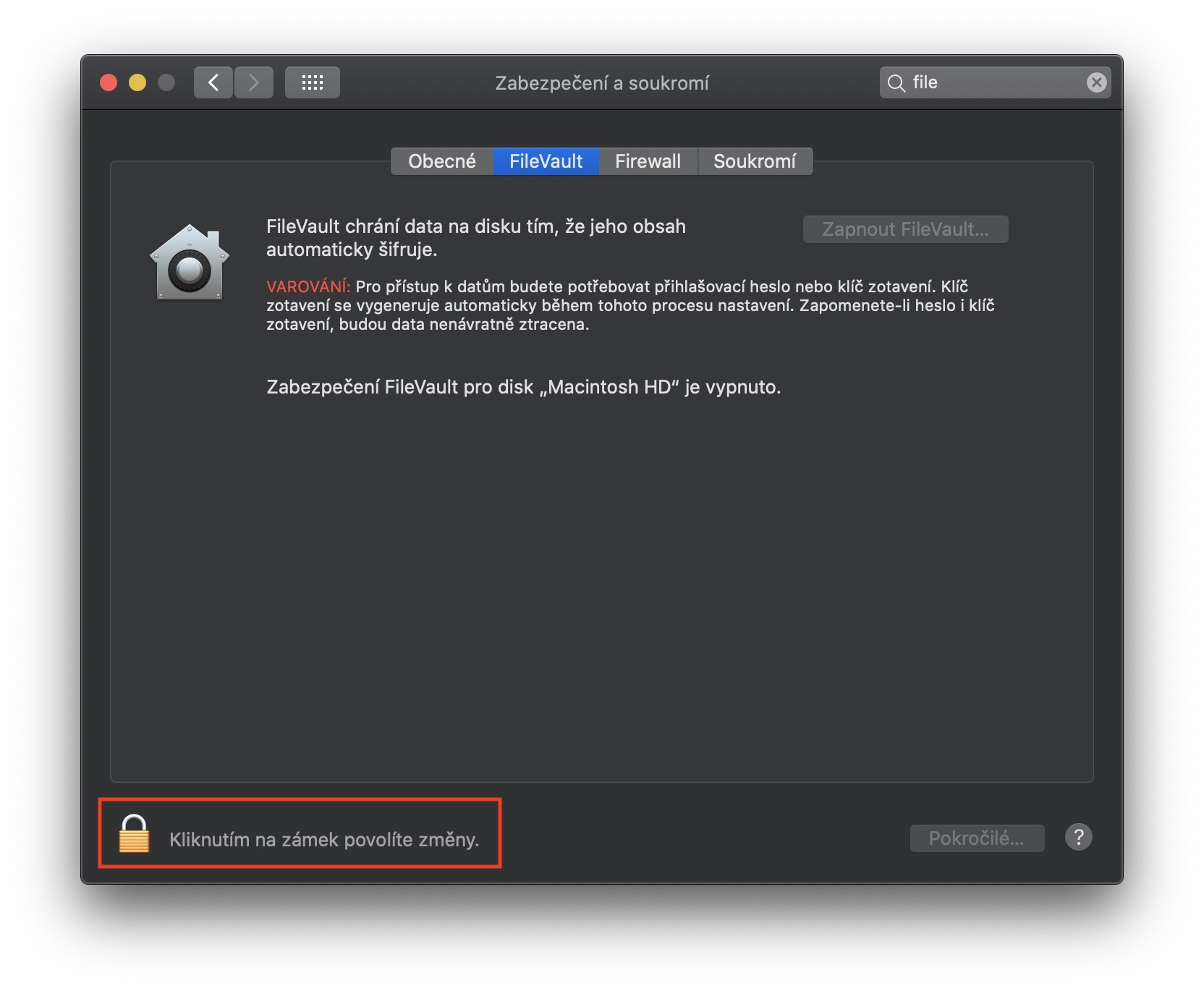

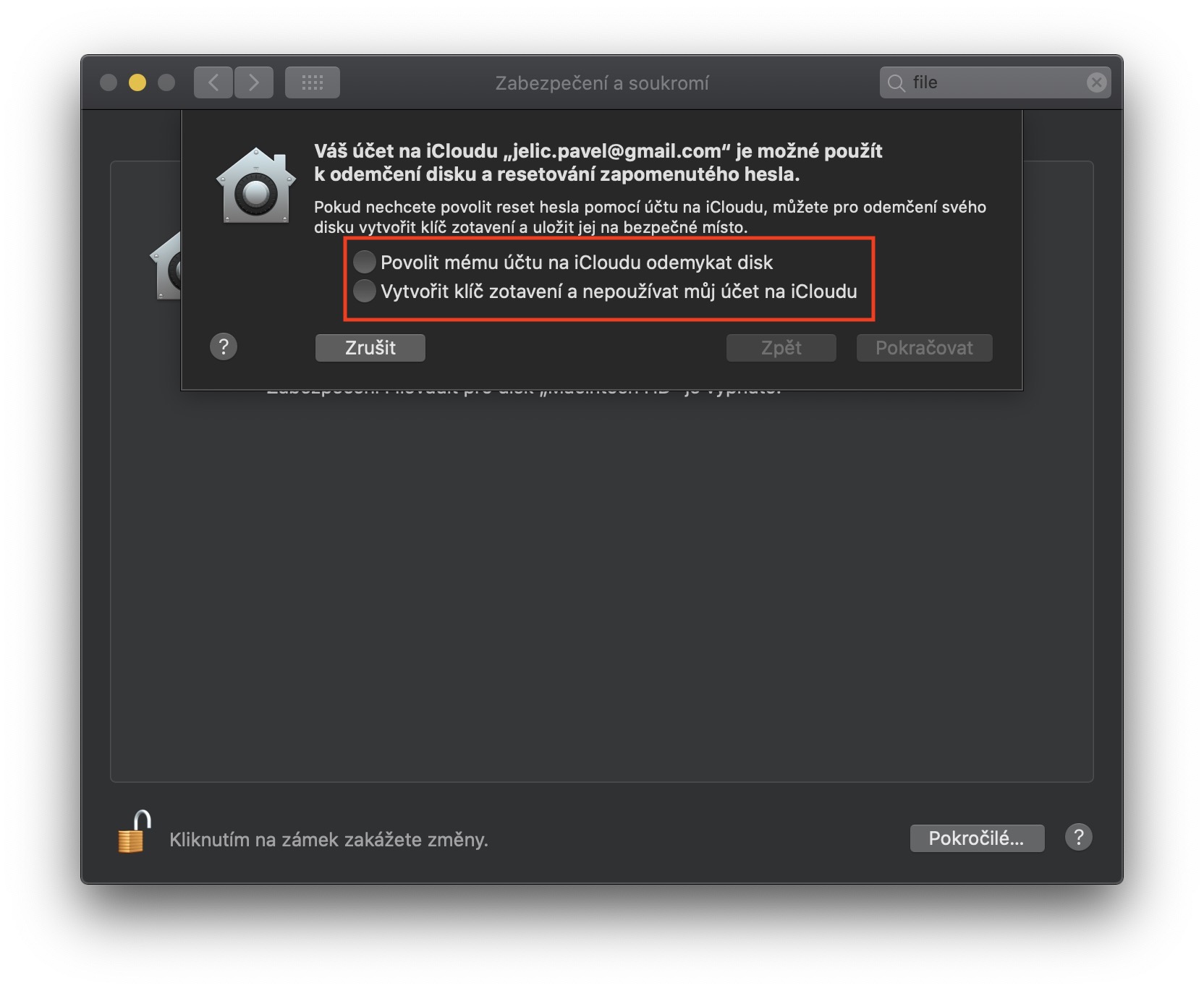
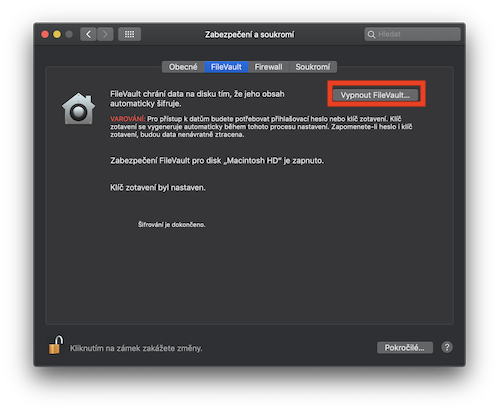
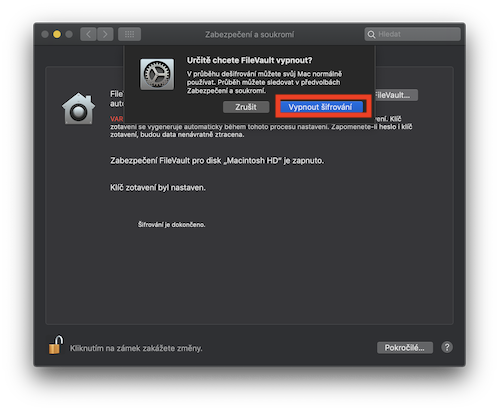
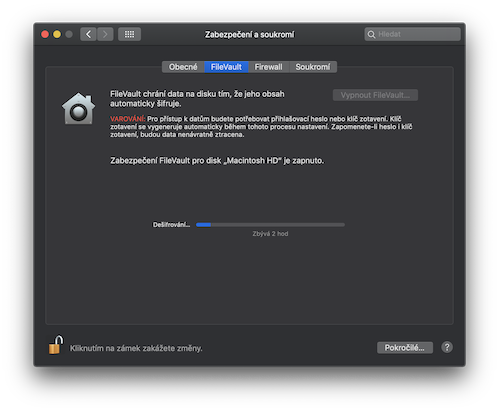
What about disk space - I heard that I lose half my hard drive capacity with this - is that true?
Hello, I would like to ask how can I get into the Apple devices of my loved ones if they are no longer with us? It is mainly about the fact that I need to put everything in order for the deceased in terms of accounting, contacts, drawing up invoices for which work was still done, etc.
Unfortunately, my mother, who lived with the deceased for 12 years, is not familiar with Apple products, and I use Apple, so I have at least a little idea what is what. But unfortunately they weren't their own and so it's a bit complicated for us, but we already have a power of attorney from his father. I would know how to get into the apple ID, but I don't know how to unlock the iPhone X and Macbook air. We need the initial password that you enter when your phone or laptop is locked. But we have an email and phone number up and running. I would be very happy for advice or a referral to someone who would help us.
Hello, I would personally try to call Apple support. They probably won't help you anywhere other than right here - if at all.